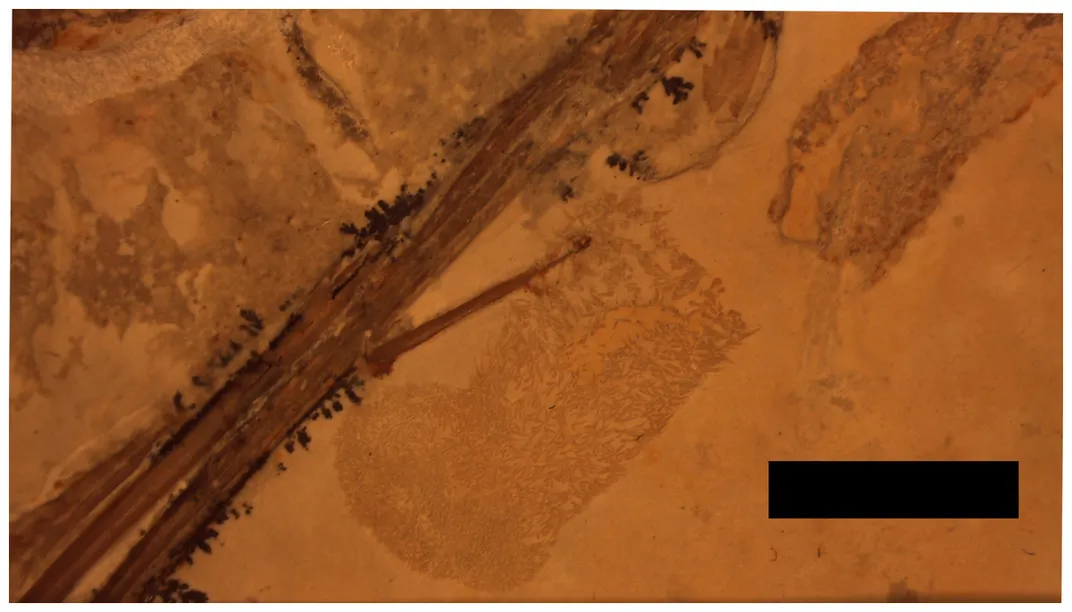Fossilized Poop is Rare, Fossilized Poop Inside a Fossilized Dinosaur is Even Rarer
Fossilized feces are always interesting, and researchers may have just found an extra special example
/https://tf-cmsv2-smithsonianmag-media.s3.amazonaws.com/filer/6a/0a/6a0a047f-8409-413a-9d25-776540217821/fig-1-full-1940x1429.jpg)
Paleontologists get really excited when they find poop — or at least, fossilized feces, called coprolites. They are not alone in the research world in this regard. Finding coprolites still within the animal that created it is rare indeed, but that may be exactly what a newly discovered specimen of Rhamphorhynchus, a winged reptile, contains.
Soft things like tissue and stomach contents don’t preserve in the fossil record well, explains Shaena Montanari for Forbes. As a result, it is "often difficult for paleontologists to fully understand the diet and ecology of extinct creatures. While there are ways of analyzing tooth shape and also chemical signatures in fossils to determine diet, an easier way to see direct feeding behavior is fossilized gut contents," she writes.
The pterosaur specimen dates back to the Late Jurassic, about 161 to 146 million years ago. Paleontologists originally found this Rhamphorhynchus the Schernfeld quarry from Bavaria, Southern Germany in 1965. Now, the fossil is held by the Royal Tyrrell Museum of Palenotology in Alberta, Canada. There, a research team recently got the chance to analyze the fossil in depth.
The team notes in their paper, published in PeerJ, that the specimen is in good condition — some soft tissues such as wing membranes and the skin that stretch from the hindlimbs to the tail are visible. In addition, lying amongst the specimen’s guts are the bones of what may be fish. There’s also a mass of something below the creature’s sacrum, a triangular bone at the base of the spine, close to where the cloaca would be.

The possible coprolite has structures in it that look like hooks. These structures, the team hypothesizes, may be the remains of spines from some kind of marine invertebrate (perhaps a sponge or relative of a starfish). If the suspiciously-located mass really is a coprolite then it will be the first found for any kind of pterosaur.